Every man is the architect of his own future. - Sallust
Continuing our African Adventure in Egypt today we will go together to visit a place of amazing historical significance, the Karnak Temple located near Luxor.
The adventure starts early in the morning, since Luxor is a few hundred kilometers away, we board a modern minibus and we are ready to start the adventure.
.jpg)

After a drive through the African desert and through some mountainous formations we finally arrive in Luxor, a dusty city, a city that at first glance looks like after the war, after a few days spent in Egypt you will realize that here almost all cities look just as dusty, the image of deserted cities, only here there are hundreds of people per square meter, a very crowded city, everyone is in a hurry, everyone is honking.




Finally after a few hours we arrive in a parking lot full of coaches, minibuses and taxis, here was the final destination.
KARNAK, the temple dedicated to the great and all-powerful god AMON RA, stands before us in all its splendour.




To enter its generous premises you have to walk through a beautiful alley lined with giant statues of strange animals with the body of a lion and the head of a ram that greet you like a guard of honour and make you feel like a demigod yourself.
The Temple of Karnak, Egypt, was the largest religious complex in the ancient world, covering an area of 100 hectares. Its name was Ipet-isut, which means "Most Chosen of Places". This temple is located on the banks of the Nile River and is the most famous archaeological site after the pyramids.
During the Middle Kingdom and the New Kingdom, the Temple of Karnak, Egypt, was part of the city of Thebes, which was the capital of Egypt at the time.




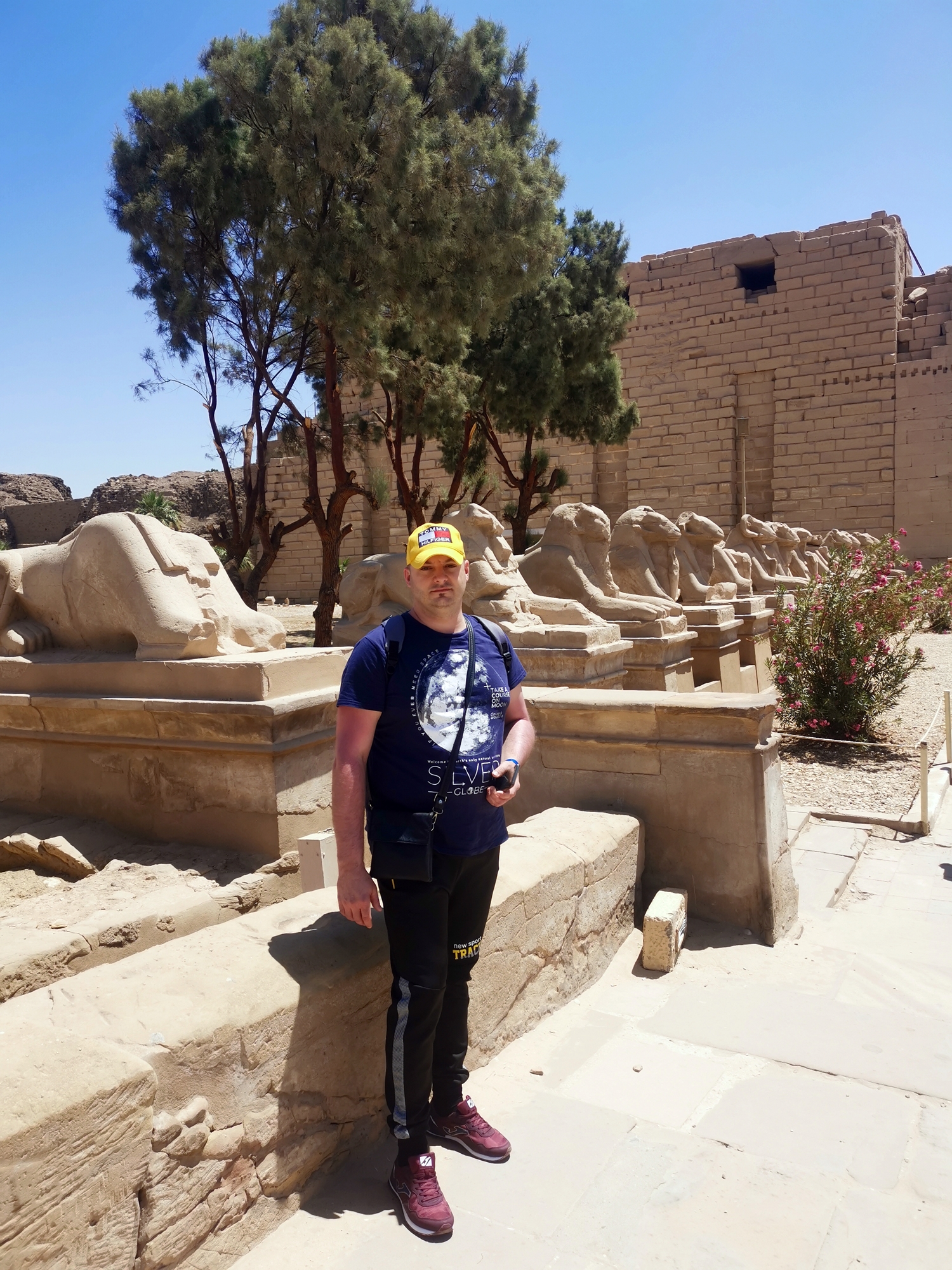
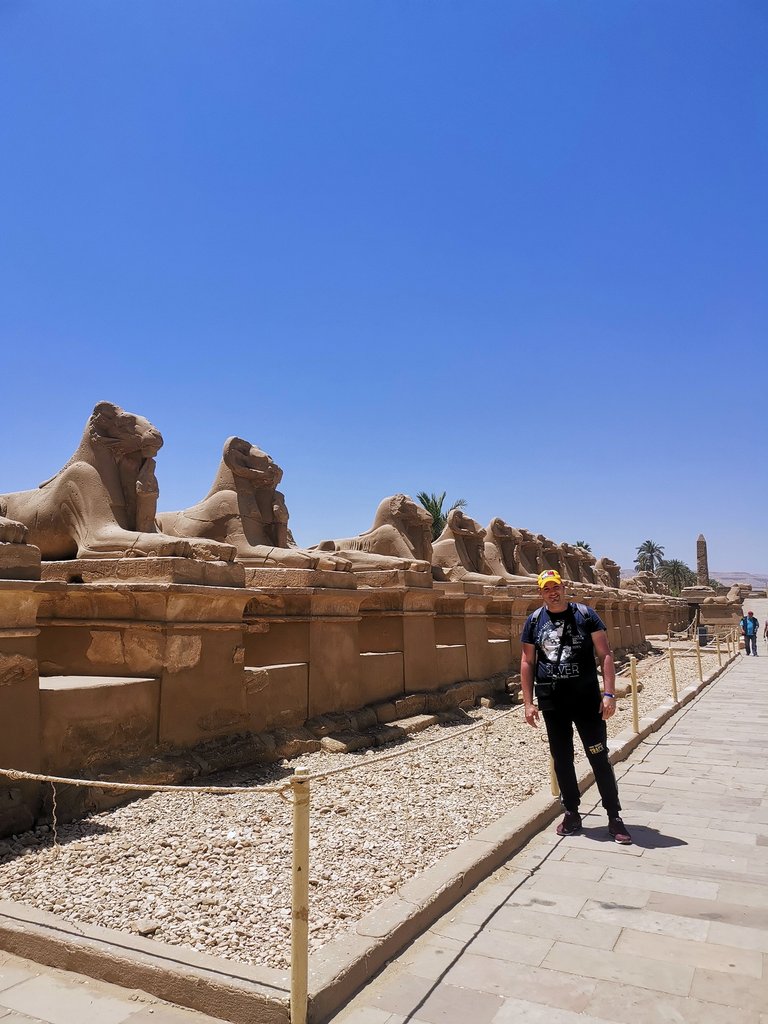






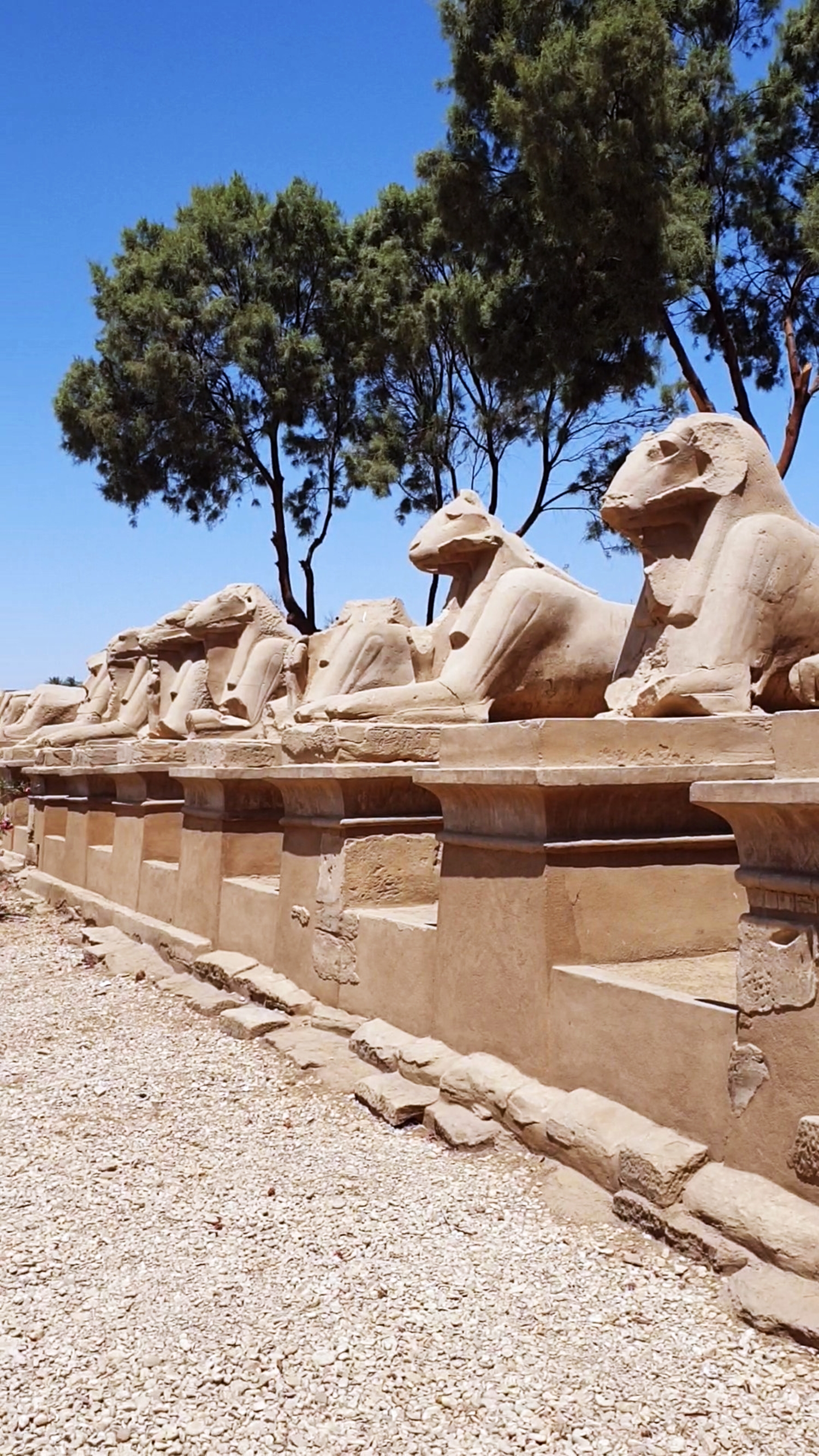

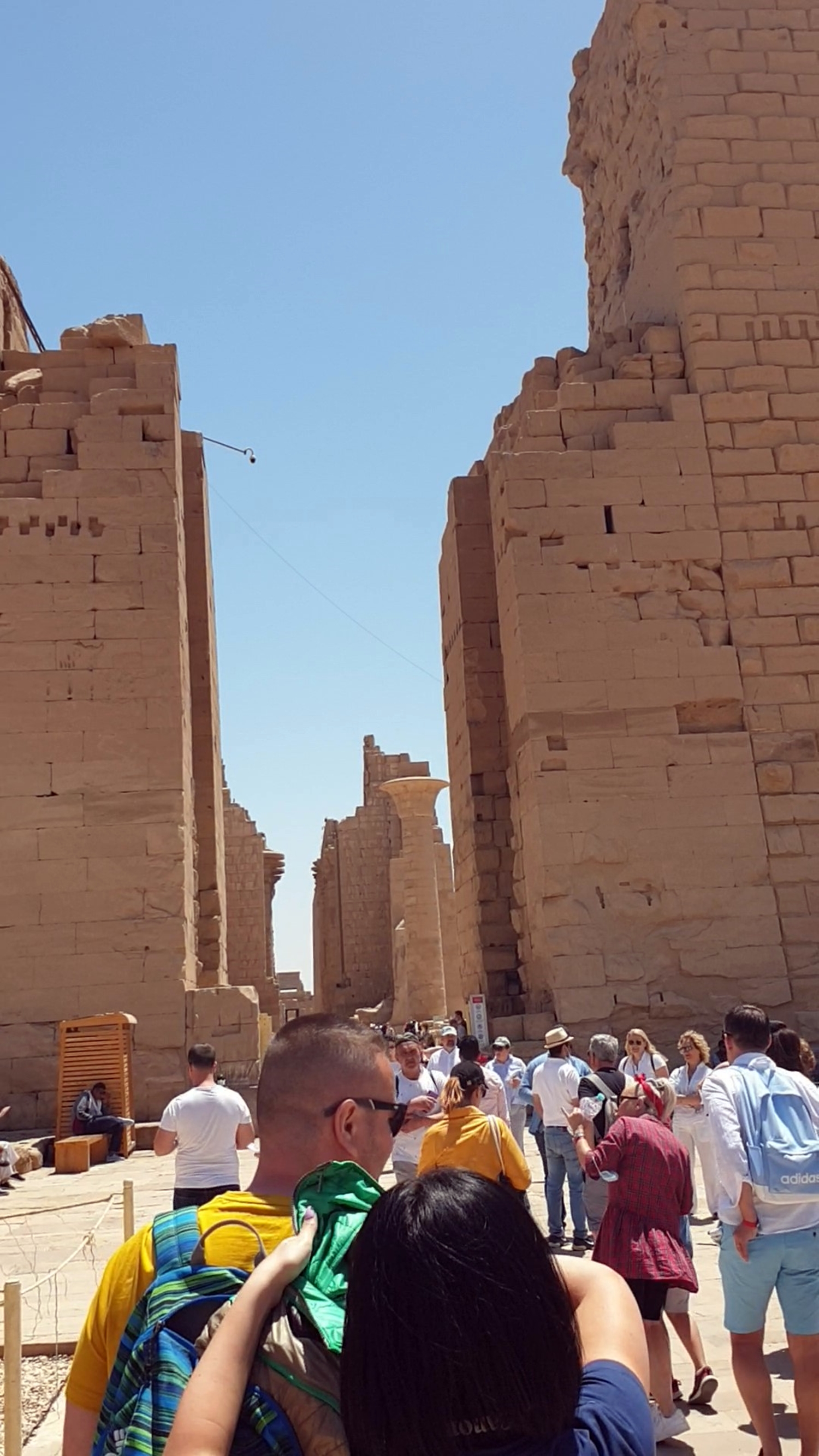
Construction of the temple began in 1991-1785 BC, during the 12th Dynasty. The first temple was dedicated to the early god of Thebes, named Montu.
Construction of the temple took around 900 years, with many pharaohs from different dynasties adding a new shrine or pillar to the Karnak complex. The temple at Karnak, Egypt, was for many years the religious centre of Thebes and the Egyptians. However, this temple was abandoned for a time when the pharaoh Akhenaten came to the throne and decided to replace the worship of Amun with the worship of the Sun, Aten.
Then he built a new capital and new temples. After Akhenaten's death, the worship of Aten was forgotten, and the priests of Thebes destroyed all signs of Akhenaten's reign and the worship of the sun god Aten.
Then the Temple of Karnak, Egypt, once again became the religious centre of old.
The Karnak complex is made up of 4 parts. The largest and most famous of these is the Temple of Amun-Ra, which is the only one accessible to tourists.
The other 3 parts are: the Temple of Mut, the Temple of Montu and the Temple of Amenhotep. The main god worshipped at Karnak was Amun, whose temple is located in the centre of the complex.
The Temple of Montu is on the north side and the Temple of Mut is on the south side. Apart from the large temples, the complex also includes some smaller temples and chapels, such as the Temple of Khonsu, the Temple of Osiris Hek-Djet and the Temple of Opet.
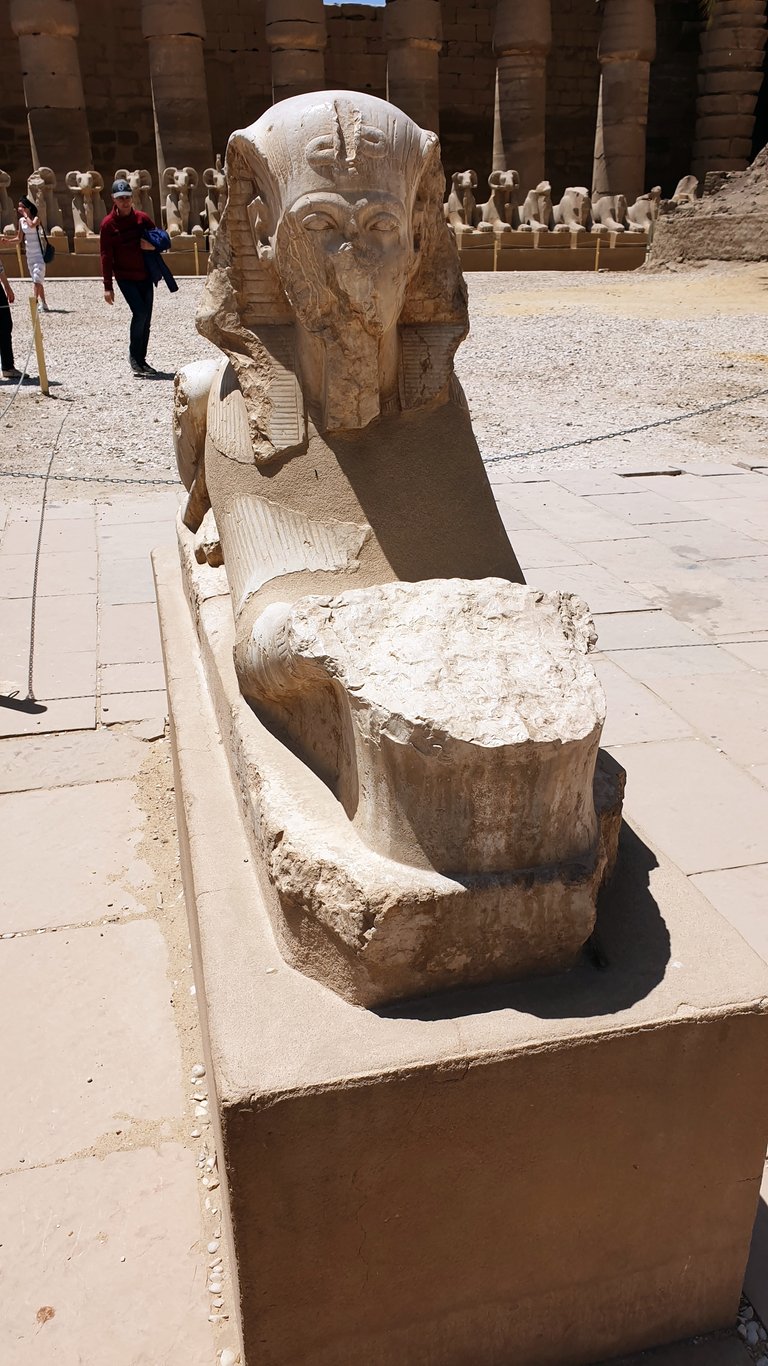
















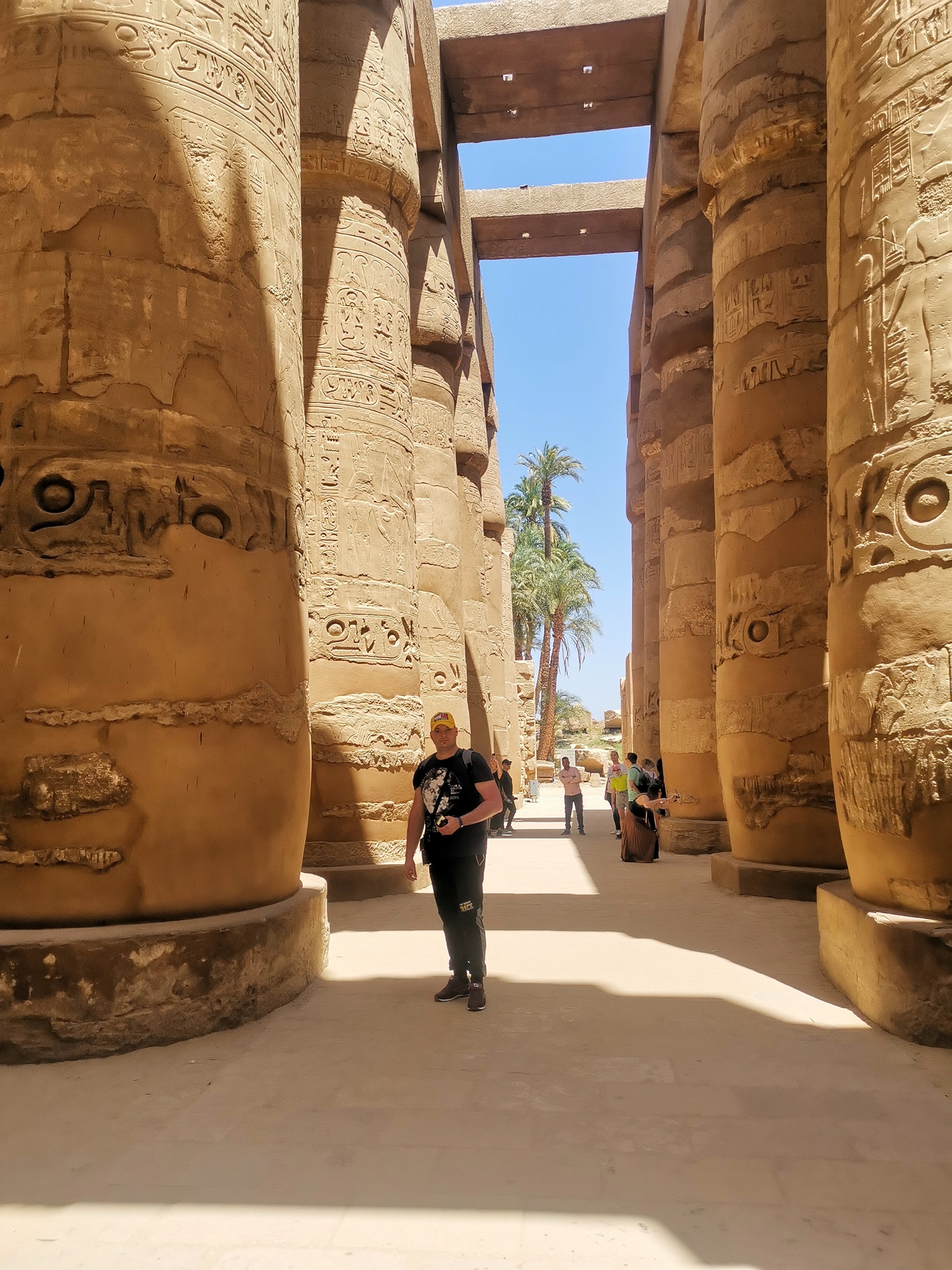







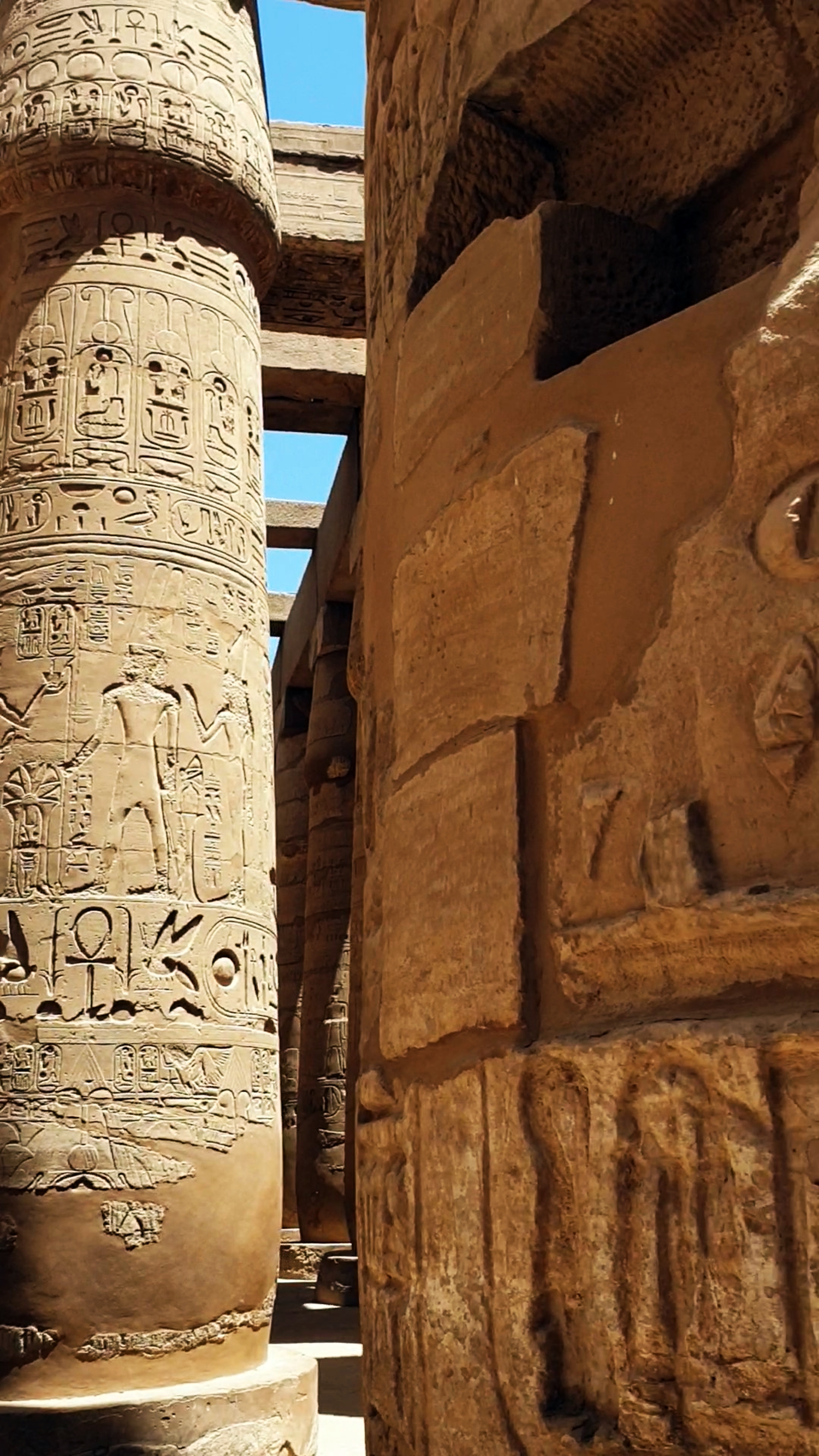







In the complex there is an alley bordered by sphinxes with ram's heads, which leads up to the first giant pillar, where there is a huge statue of Ramses II. The first pillar was never finished, and next to it are the remains of a brick ramp, showing how the pillar was built at that time.
Next to each row of columns there are 7 rows of 9 columns, each measuring 12.8 meters high. In total there are 134 columns in this magnificent hall.
Today, the Temple of Karnak, Egypt, is one of the most visited sites in the area after the pyramids. This temple is a wonderful example of Egypt's greatness in antiquity and also a source of information for archaeologists from all over the world, who are still searching for answers about the mysterious history of Egyptian civilisation.
The most prominent builders of Karnak were Thutmose I, Thutmose III, Hatshepsut, Amenhotep III, Ramses I, II and III, the Libyan kings of the 22nd dynasty and the Ptolemies, who ruled Egypt before the arrival of the Romans.
Pharaohs contributed to the construction of the temple complex, but each tried to immortalise his name in it, erasing the name of his predecessor. Since the beginning of earthly history, after the reign of the gods in Egypt, there have been 134 pharaohs - a sacred number that means "visible world" in the language of Egypt's priests.
The Temple of Karnak was built not only as a Divine House, but also for the consecration of neophytes.
The most impressive place in Karnak Temple is the Hall of Columns of Pharaoh Seti I - a veritable forest of mighty pillars covered with bas-reliefs.
There is a well-known old saying that numbers rule the world, and numbers rule destinies.
Hatshepsut, a female pharaoh of the New Kingdom, erected a "red shrine" at Karnak for the ceremonial boat of the god Amun, by order of the queen, giant pink granite obelisks were erected, pillar VIII in the temple of Amun was erected, the shrine of Amun's wife was significantly erected, the temple of Amun's wife was significantly erected.
Two obelisks of Hatshepsut, about 30 meters high, near the pillar of the temple of Amun-Ra at Karnak were the tallest of all previously built in Egypt, One of the obelisks survives to this day.





To the south, the Sacred Lake borders Karnak Temple, on its shore is a granite column with a huge scarab beetle on top. The Egyptians considered it sacred and called it Khepri - 'self-defender'. In ancient times, the lake was used for mysteries, Amun's golden boat and boats of his refinement glided across it.
One of the legends says that the scarab beetle column is an ancient clock that measures the time of our world. Slowly, one millimetre a year, the column enters the earth, and when the sacred scarab - the symbol of Amun-Ra's resurrection - disappears, the end of the world will come.



Karnak Temple was the House of Light dedicated to Amun-Ra. Legend has it that in ancient times the stone Ipet Sout - "Mother of the Universe" was kept in the Temple. An ancient shrine named after it survives to this day; the solar axis of the Temple runs through it, which starts from the Sphinx Alley.

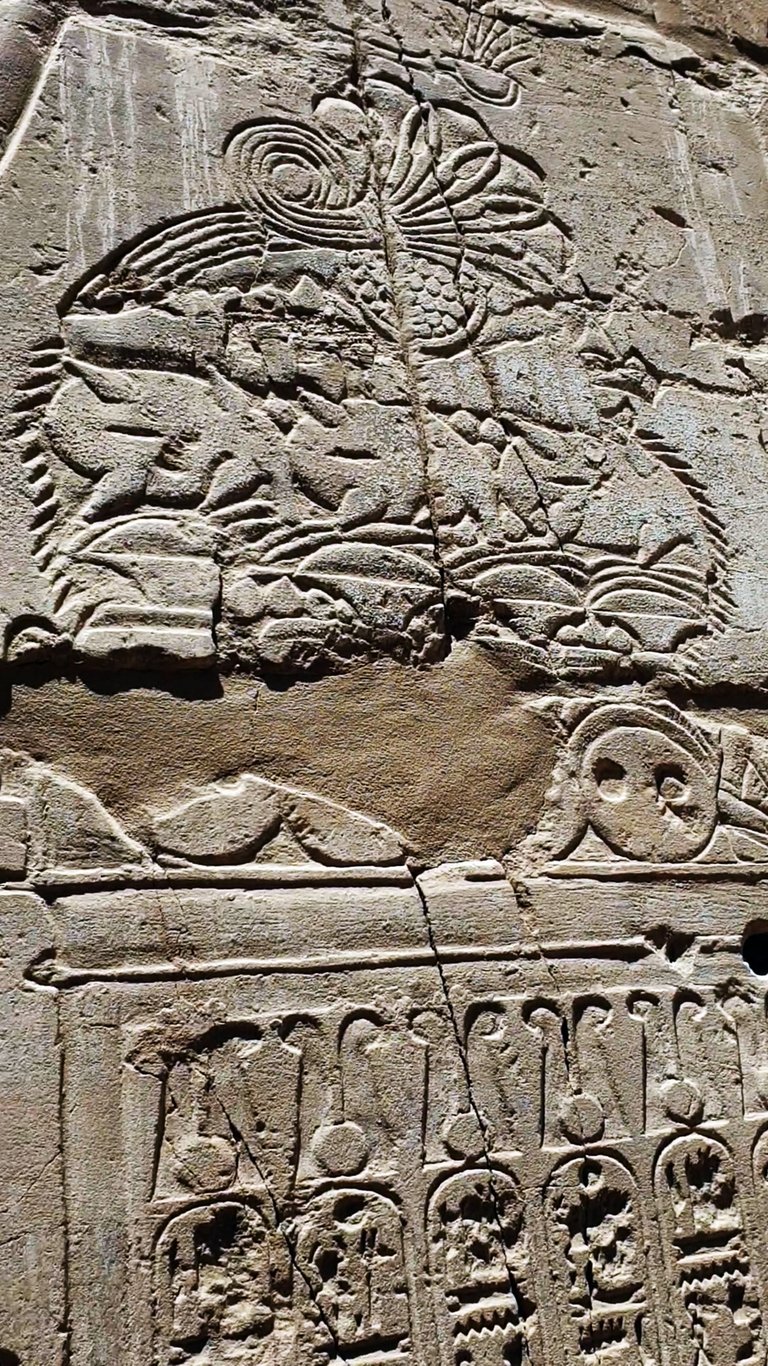
We also enjoyed a little boat ride on the Nile.




For now here today we put an end to the Egyptian adventure, see you in the next adventure which I don't know where and when it will be.
Thank you in advance for stopping by, for supporting me as this @triplug project moves forward, but I am also grateful for the advice you will give me.
Yours @triplug
